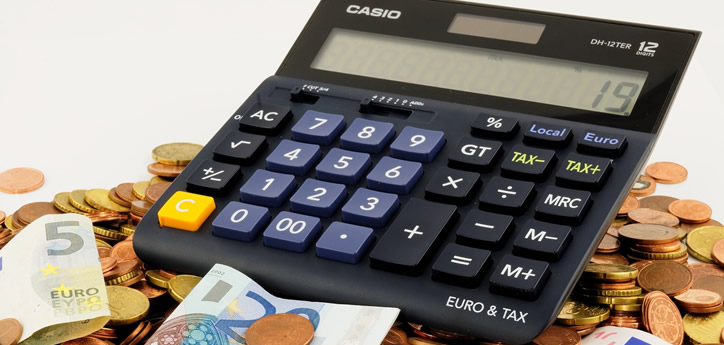IRA savings accounts offer a means of saving for retirement without having your funds locked up for a particular period of time. The best IRA savings account aims to offer low fees and excellent investing options over a long-term period.
Several people misunderstand how an IRA investment works. Many people want to know where can find the best IRA rate out there. But, there is no such thing as an IRA rate. Really, there’s no such thing as an IRA rate. It’s a term which is often misunderstood.
An IRA (Individual Retirement Account), is just that – an account. It isn’t an investment. Think of it like a bucket. For instance, if someone was holding a bucket, and he or she asked you to tell him or her how much it weighed. For you to answer that you would have to know what was in the bucket; water, air, bricks, or sand. If you want to determine what an IRA rate will be, you have to choose what kind of investments will be linked to that IRA.
Best IRA Savings Account: Determining The Rate Of Return
To estimate the return rate your IRA may earn, you need to look at the performance of various underlying investments. For instance:
- An IRA can invest in the fixed annuity, in which, you would go for the best rates of fixed annuity.
- It can own certificates of deposit (CDs) whereby you would go for the best CD rates.
- An IRA can own government bonds, or treasury securities, in which case an IRA rate will be a combination of interest rates paid by the underlying bonds which it owns.
- Your IRA savings account can also own individual stocks, and if structured well, an IRA can even own real estates, as well as just about any other kind of investment you may think of.
- An IRA can own mutual funds, where you would have to choose whether to own bond, balanced mutual funds or stock and look at their performance history to know their previous rate of return. And of course, the return of previous years doesn’t mean that it’s what it’ll earn this year.
Before you look for the best IRA rate, always remember that the term IRA is only a title which describes the tax treatment which applies to the investments within that IRA.
To choose the best IRA rates; first, you need to choose how much investment risk you’re comfortable taking. Several investment options which have the capacity to pay a higher rate of return over the long term provide less stability over a short term.
Once you’ve selected the investments you want your IRA to hold, you can look at their performance history. This investment would only be referred to as a “rate” if it was interest-paying such as a bond, fixed annuity, or CD.
What to Watch Out For
If a particular investment company seems to be providing a much higher rate than you can get anywhere else, you should be cautious. No one ever gives money away for free. High returns with low risk do not exist.
Don’t always trust ads that promise a high-interest rate, mostly some scrutiny will show you it’s not as good as it might seem! Make sure you question everything about the advertised rates!
Usually, these advertisements are sponsored by companies which get a commission to sell their investment products to you. If something seems too good to be true, have someone independent assist you in evaluating the investment before you decide to purchase. We have seen a lot of people lose a lot of cash, all in the hopes of earning a little higher rate of return.

Source: pixabay.com
Where to Find Low-Risk Investments
All investments have a risk; even a low-risk savings account at your bank. Everyone wants the best IRA savings account. The challenge is to identify an investment which is paying you a good return for the risk you’re taking.
Here are 7 low-risk investments, and some things to consider if you’re choosing them.
1. Certificates of Deposit (CDs) – Banks often issue certificates of the deposit which guarantee you a particular interest rate over a particular term, like six months, 1 or 5 years. If you withdraw the cash before the end of the period, a penalty may apply. Like savings accounts, Certificates of Deposits are a low risk too. CDs can be a perfect place to park cash for a purchase you know you’ll want to make at a particular time in the future.
2. Bank Savings – A savings account at your credit union or bank is low risk. Your account value isn’t going to fluctuate. Yet you can lose cash in a steady and slow way, like erosion. If your savings account pays you 1%, and inflation is 3%, you’re losing 2% a year in purchasing power. The bank saving accounts are the greatest choice when you want access to your cash at any time.
3. Treasury Securities – The United States Government issues several kinds of securities, all regarded as low-risk investments. There are I Bonds, EE Bonds, TIPS, Treasury Bills, Treasury Bonds, and the Treasury Notes.
You purchase these kinds of investments electronically from the United States Treasury through your online account.
4. Stable Value Funds – It is a perfect investment option which is available in many (but not all) 401(k) plans. It’s a low-risk investment with the objective of preserving your principal, offering liquidity so you can transfer out of it at any time, and attaining returns comparable to the short and intermediate term bonds but with minimal volatility (less up and down fluctuations). Many near retirees need to consider stable value as an essential part of their portfolio within the 401k plan.
5. Money-Market Accounts – Your bank may provide a money-market account that may pay a slightly higher interest rate than the standard savings account. Your bank may ask you to keep a low balance in your account to qualify for a higher interest rate. The money-market accounts are a bit different than the money-market funds.
6. Immediate Annuities – This guarantees you a specific monthly income amount. Just as with the fixed annuity, the guarantee is only as good as the insurance firm issuing it. The cash in an annuity is exposed to some risk if an insurance firm goes out of the business. If you’re under the state guaranty limits, your cash needs to be protected too. If you’re older and also hoping for income for the rest of your life, immediate annuities are a perfect choice.
7. Fixed Annuities – Insurance companies issue these. They’re low-risk investments since the insurance firm contractually accepts to pay you the fixed interest rate. A fixed annuity is similar to a CD except the interest accrued is tax-deferred.
Unlike a CD you will pay a penalty tax if you withdraw the accrued interest before you to reach 59. The interest rate guarantee is only as good as the insurance firm issuing it. If your insurance firm goes out of business your cash in an annuity is exposed to some risk.
Your cash should still be protected if you’re under the state guarantee limits. These accounts are a perfect choice if you’re in a high tax bracket, want your cash to be safe, and will not need to use it until 59 or later. Go check out if you can find the best IRA savings account for you.
Featured Image Source: pixabay.com








